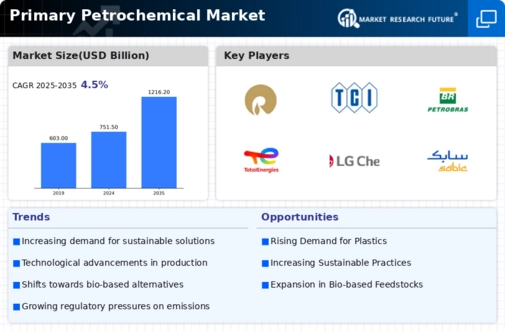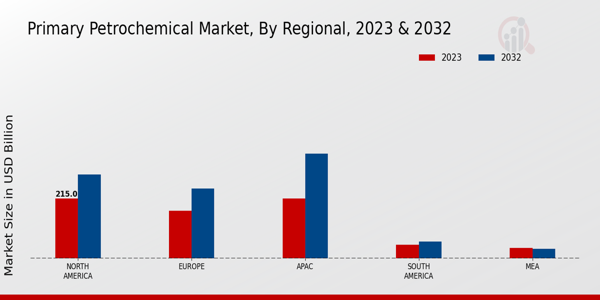The Primary Petrochemical Market is characterized by a dynamic competitive landscape, where several prominent players vie for market share across various segments, including ethylene, propylene, benzene, and other derivatives.
This market is driven by the increasing demand for petrochemicals in diverse applications, such as packaging, automotive, construction, and textiles, fueled by economic growth and urbanization. Competitive insights reveal that companies are focusing on innovation, sustainability, and strategic partnerships to enhance their product portfolio and cater to evolving consumer preferences.
Factors such as raw material availability, regional industrial growth, and environmental regulations create both challenges and opportunities within this market, making it imperative for companies to develop agile strategies that respond to shifting demands and competitive pressures.
Ineos Group stands out as a significant entity within the Primary Petrochemical Market due to its extensive production capabilities and strong market presence. The company boasts a diverse portfolio that covers a wide range of petrochemical products, providing it with a competitive edge.
Ineos Group has invested heavily in modern production technologies, allowing for enhanced efficiency and reduced environmental impact. This commitment to advanced manufacturing processes not only strengthens its operational capabilities but also aligns with the industry's shift towards sustainability.
Additionally, Ineos Group maintains a robust supply chain network, ensuring reliable distribution and customer support, further solidifying its position in the market.
The China National Petroleum Corporation (CNPC) holds a noteworthy position in the Primary Petrochemical Market, benefiting from its expansive operational footprint and strategic investments in production facilities.
As one of the leading players, CNPC has successfully integrated its upstream and downstream operations, providing a seamless flow from crude oil extraction to petrochemical production. This vertical integration fosters cost efficiencies and enables CNPC to respond swiftly to market fluctuations.
The company is also known for its significant technological advancements and ongoing research initiatives aimed at improving the performance and quality of petrochemical products.
With a commitment to innovation, CNPC is well-equipped to leverage emerging market opportunities and address the growing demand for petrochemicals within and beyond its domestic market, reinforcing its status as a major competitor.




















Leave a Comment